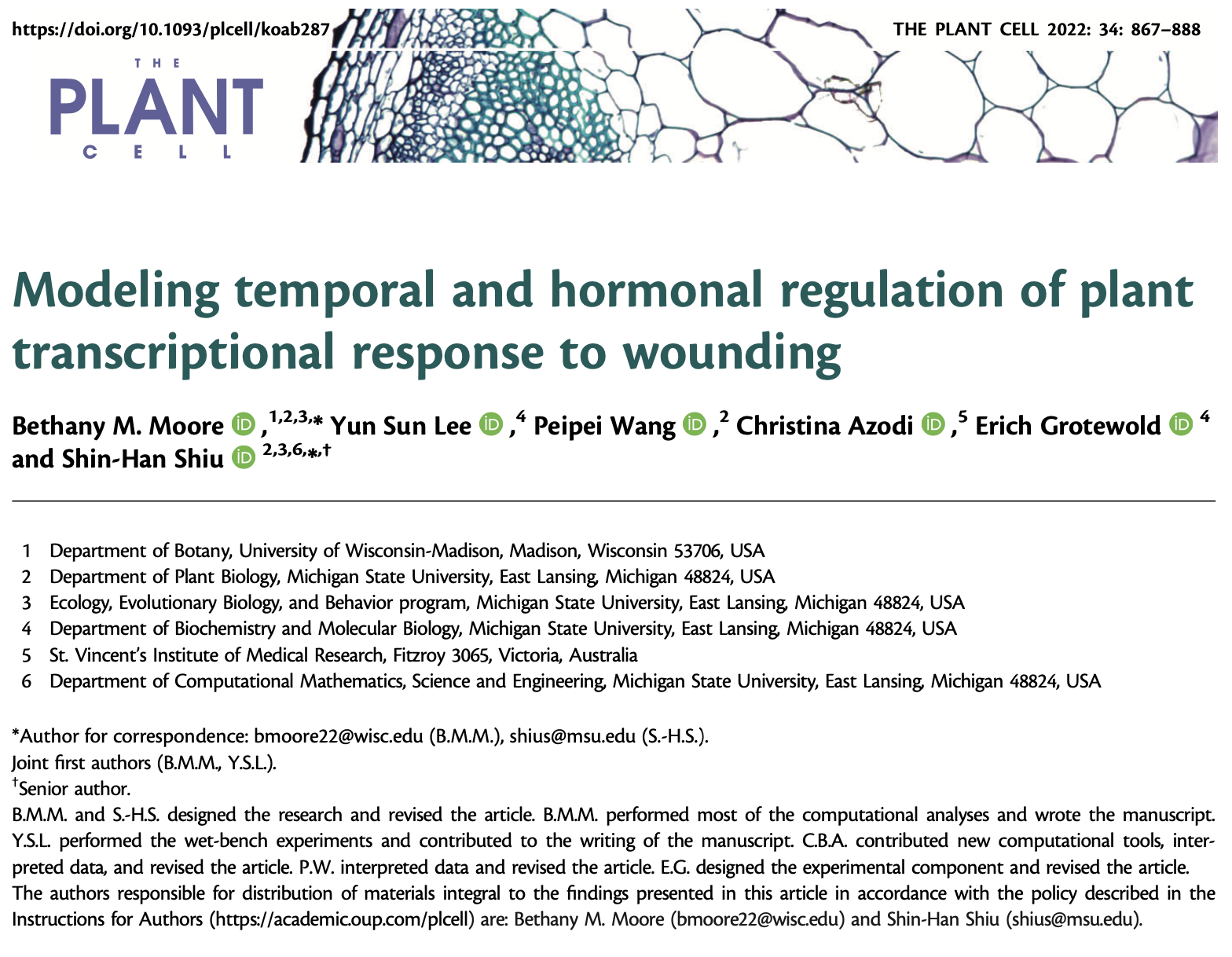Modeling temporal and hormonal regulation of plant transcriptional response to wounding

Host: Bao Yu
Date: 03 Aug 2022
Abstract:
Plants respond to wounding stress by changing gene expression patterns and inducing the production of hormones including jasmonic acid. This wounding transcriptional response activates specialized metabolism pathways such as the glucosinolate pathways in Arabidopsis thaliana. While the regulatory factors and sequences controlling a subset of wound-response genes are known, it remains unclear how wound response is regulated globally. Here, we how these responses are regulated by incorporating putative cis-regulatory elements, known transcription factor binding sites, in vitro DNA affinity purification sequencing, and DNase I hypersensitive sites to predict genes with different wound-response patterns using machine learning. We observed that regulatory sites and regions of open chromatin differed between genes upregulated at early and late wounding time-points as well as between genes induced by jasmonic acid and those not induced. Expanding on what we currently know, we identified cis-elements that improved model predictions of expression clusters over known binding sites. Using a combination of genome editing, in vitro DNA-binding assays, and transient expression assays using native and mutated cis-regulatory elements, we experimentally validated four of the predicted elements, three of which were not previously known to function in wound-response regulation. Our study provides a global model predictive of wound response and identifies new regulatory sequences important for wounding without requiring prior knowledge of the transcriptional regulators.